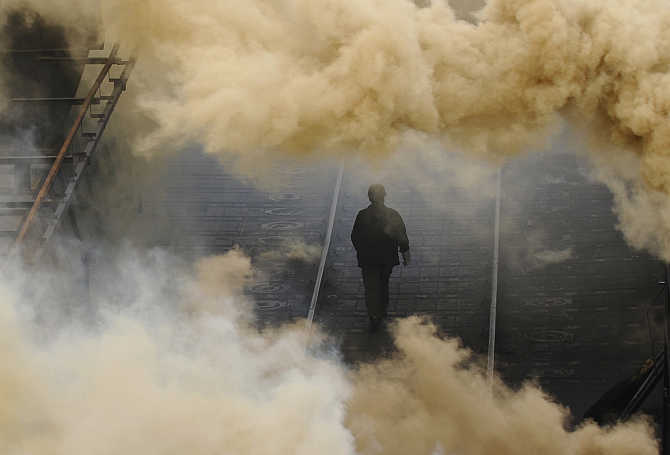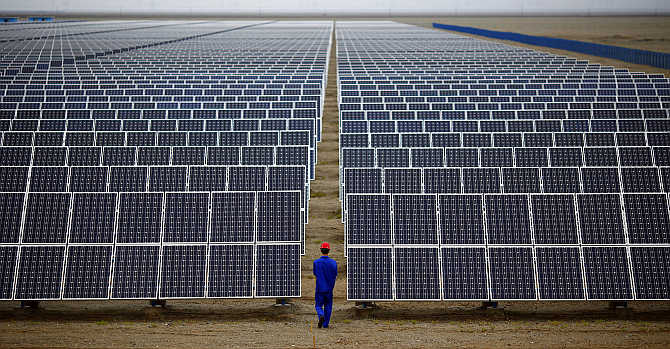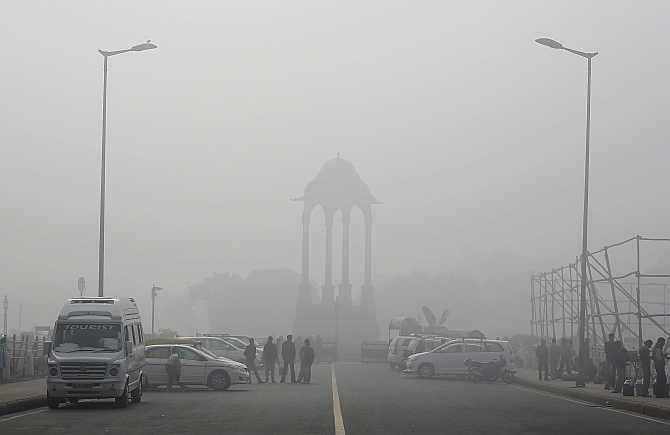
From controversies around legislations back home to comments about rural women, much has been said and written about the recent US visit of the Prime Minister, Manmohan Singh. Lost in the noise is the substance of the India-US strategic partnership which got a substantial impetus on specific dimensions.
Apart from the usual rhetorical flourishes, the US-India joint statement noted considerable progress on the issues of nuclear energy and defence cooperation. But one particular aspect of the partnership that got a major boost and went nearly unnoticed is cooperation on combating climate change.
Climate change has been a testy topic for India-US relations. While both countries officially recognise the need for urgency in combating climate change, they have been at different poles in international negotiations. The US emphasises that all countries (including developing countries like India) should take on commitments, with transparency and review systems to verify compliance.
India on the other hand, along with the so-called 'G-77+China' bloc of developing countries, emphasises that the primary responsibility of taking action rests with developed countries. They argue that the developed countries have created the climate change problem in the first place, that they have a 'historical responsibility' to address it, and that the principle of 'common but differentiated responsibilities' must govern all actions.
...

This effectively means that the primary effort to reduce greenhouse gas emissions should be made by developed countries, and to the extent that developing countries are expected to act, they must be given access to appropriate technologies and adequate finance to enable action. These positions seem hard-wired for the last many years, and despite some momentum starting from the Copenhagen Climate Conference in 2009, little progress has been made in recent years.
The multilateral process is like a patient in coma - everyone hopes it will revive, but no one is putting any money on it (though countries have agreed to work towards an agreement by 2015 that will become operational by 2020). In this context of multilateral logjam, the good news is that countries are making progress on a bilateral basis. The argument is that while we await a grand multilateral deal, there are windows of opportunity to act bilaterally.
The US-India joint statement is a significant step forward in this direction. There are three concrete elements in the statement that point in this direction. First, the two countries have agreed to set up an India-US Climate Change Working Group "to develop and advance action-oriented cooperation".
...

Given the reticence in the past on bilaterally engaging on this issue, the setting up of this mechanism is in itself a big step forward. Second, the two countries have agreed to immediately convene the India-US Task Force on hydrofluorocarbons.
HFC is a GHG used in refrigerators and air conditioners and has a potentially high short-term impact on climate change. Decreasing HFC use is seen by many as a 'low hanging fruit' to combat climate change. This Task Force was set up in 2010, but met only once before it went into cold storage.
It has been mandated to discuss approaches to 'phase-down' consumption and production of HFCs using both the Montreal Protocol (a successful multilateral treaty which governs the phase-down of ozone-depleting substances) and UNFCCC (which governs GHGs that impact climate change). The US has signed a similar agreement with China recently, and with this next step, tangible progress can be achieved in reducing the consumption of this harmful gas in three mega-economies of the world.
Third, the two countries agreed to launch a new initiative, 'Promoting Energy Access through Clean Energy' to "rapidly deploy innovative renewable energy solutions to those who currently lack access to energy".
...

Given the large untapped potential of renewable energy - especially of off-grid models in remote rural settings - in addressing India's energy deficit while reducing emissions, this is a significant step forward. Of course, these three initiatives only mark a beginning, and the path forward will undoubtedly be thorny. The HFC issue, in particular, will be far from easy to resolve, given the technical complexities (i.e., lack of currently available viable substitutes for HFCs) and the question of who will fund the phase-down.
Moreover, bilateral windows will only achieve so much. Given the scale of the climate change challenge, there is no substitute for an ambitious and equitable global deal. Some are worried that much like in trade negotiation, bilateral and plurilateral deal-making may weaken the appetite and momentum for a global deal.
Nevertheless, these three concrete elements demonstrate a new openness on the part of the two countries to engage on what the leaders of the two countries have themselves called "a defining global challenge of our times".
The task ahead will be to maintain the momentum and ensure that we 'walk the talk', showing results in a clear time-bound manner, now that a window has been opened. The author works for the ministry of rural development and previously worked with the ministry of environment and forests. These views are his own.